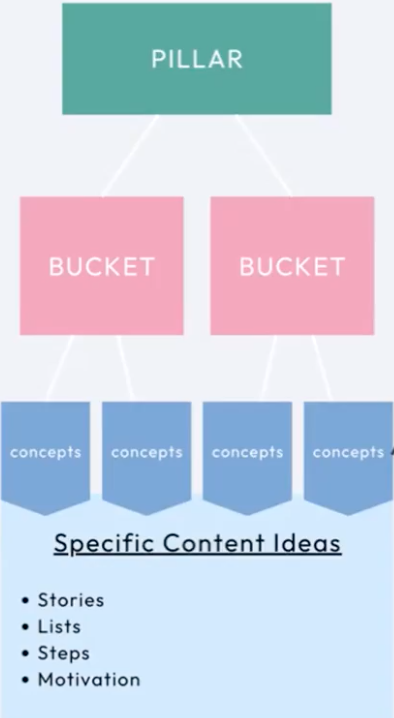
Navigating the Content Jungle to Thrive in Business
How would you answer this question: When it comes to making a content plan, I feel ______ ?
Overwhelmed? Stressed? Uncomfortable? Energized?
We know that content is important to our business, but it can really be A LOT. It’s like a jungle—layered, messy, and beautiful. But, it is helpful (and important) to make a plan that starts at a high level and works into details.
This kind of plan ensures that you are able to be relevant and consistent with your content production.
What Should Content Do for You and Your Business?
Content is very valuable and should . . .
- Put your business top of mind with ideal clients and strategic partners,
- Build authority,
- Attract clients,
- Keep you relevant,
- Reassure people who have followed you for a long time,
- Make your business searchable, and
- Give you online visibility.
When we are actively planning, we can follow trends, stay ahead of the game, and connect with people where they are.

Taming Content
Sometimes we abandon content and content production because it feels overwhelming. Or, it takes over the business because we spend so much time creating it—and that’s not sustainable either.
The key is to spend less time producing while still having plenty to pull from when you need it.
By dividing content into three layers, you can more easily create and repurpose it.
Content Pillar
Begin with a pillar, which is a broad, overarching theme that aligns with your business brand, values, and goals. As you create a pillar, think about your clients and audience. These pillars will shift as your business shifts so re-evaluate your pillars every year.
Subcategory Buckets
The next layer is subcategory buckets, which are topics within the pillars. They relate to the pillar and are individual in their content. Think of them as conversations that flow from the pillar.
Specific Concepts and Ideas
This is where your creativity and personality comes in. Other people may have similar pillars and subcategory buckets but your specific concepts and ideas will be unique. These are things like stories, lists, steps, quotes, and motivations.
In the end, you will have multiple pillars. The idea is to take several hours to define your pillars, buckets, and ideas then pull from this bank for all your content needs.
Sample Content Blueprints
Let’s look at a couple of examples.
Health and Wellness
Imagine a business focused on health and wellness. One pillar is Mental Health. Under that, you might have the subcategory buckets of stress management techniques, mindfulness practices, and coping strategies. Then, under the bucket of stress management techniques you have specific ideas: “5-minute Stress Busting Exercises,” “The Power of Deep Breathing for Instant Calm,” and “Incorporating Mindful Walking into Your Daily Routine.”
Take one of those ideas, like “The Power of Deep Breathing for Instant Calm,” and create one piece of long-form content like a blog, video, or podcast.
Finally, repurpose that long-form content into 5 (or more) short-form ideas:
- Infographic: A calming graphic featuring simple exercises
- Live video: Live video demonstrating deep-breathing exercises
- Testimonial: A calming background with a quote overlay from sharing their experience with deep breathing
- Interactive post: A poll asking “How often do you practice deep breathing for stress relief”
- Quick-tip carousel post: A series of carousel slides with quick deep-breathing tips
Do you see how you are repeating the same information but you are repurposing it in a smaller form? You can easily get 20 specific ideas from 1 piece of long-form content.
Virtual Assistant Industry
Now imagine that you have a business in the virtual assistant industry. One pillar might be task automation. The subcategory buckets could be email management, social media scheduling, and calendar organization. Finally, specific ideas under email management might include: “Using filters and labels for email organization,” “Creating effective email workflows,” and “Setting useful auto replies.”
Then, use one idea to create a blog called, “Using Filters and Labels for Email Organization.”
Finally, as above, repurpose the long-form into short-form content ideas like a poll question (“How often do you email filters and labels for organization?”), short video clip with captions explaining the benefits of using filters and labels, or quote graphic “Filters and labels turned my chaotic inbox into a productive haven!”)
Long-form vs Short-form
Let’s wrap up with a quick review of long-form and short-form content.
Long form includes blogs, podcasts, youtube videos, articles and publications, educational platforms, LinkedIn articles,and ebooks.
Short form, which is what we primarily consume, includes social media, short videos, messaging apps, forums, email marketing, short-form podcasts segments, and search engine snippets.
Learn with SOWBO
With a bit of planning in the beginning, you can create a well-thought out process for your business content so that you can be consistent and relevant and put your own spin on the information you put out. Start with planning your long-form content and turn that into short form.
Join the SOWBO Membership for monthly training sessions on powerful, practical topics like this one to help grow your business effectively and efficiently!